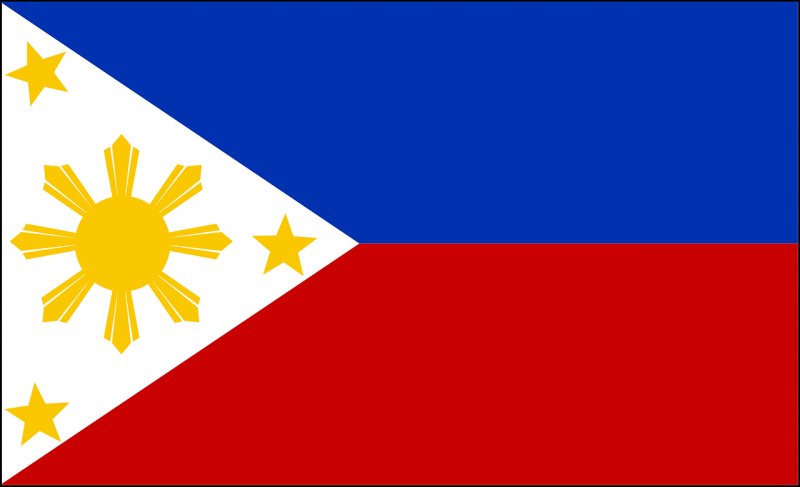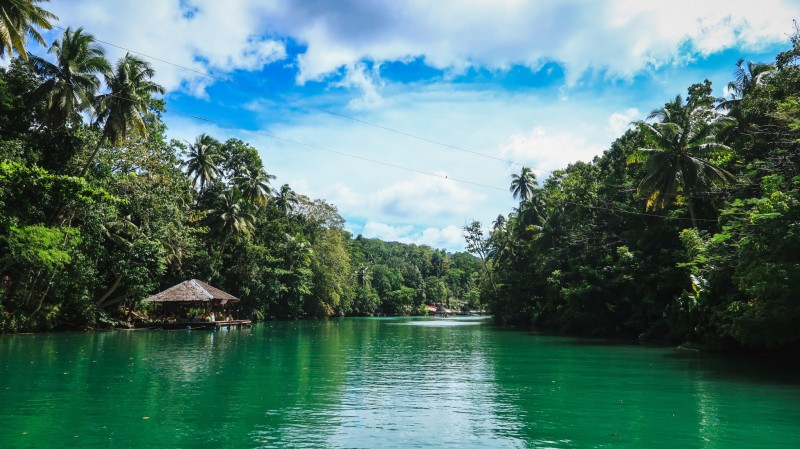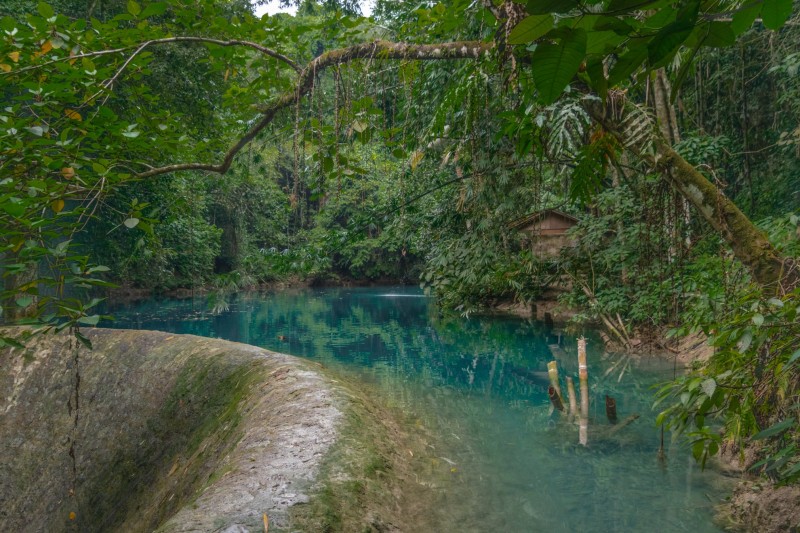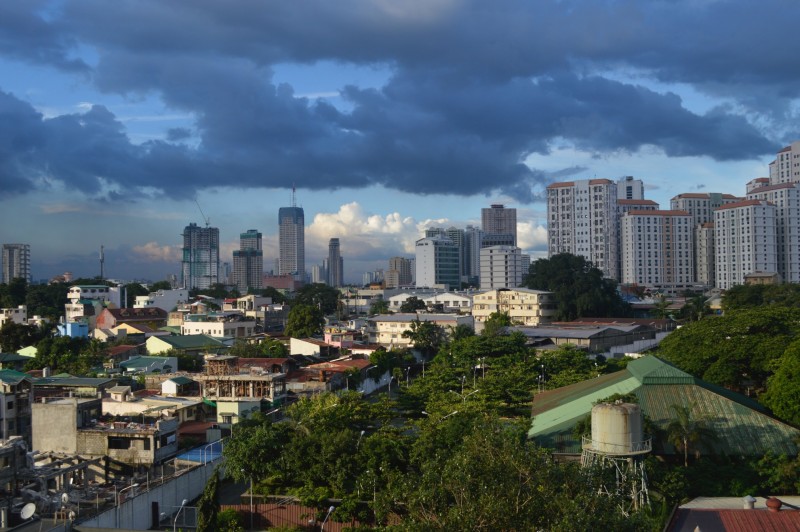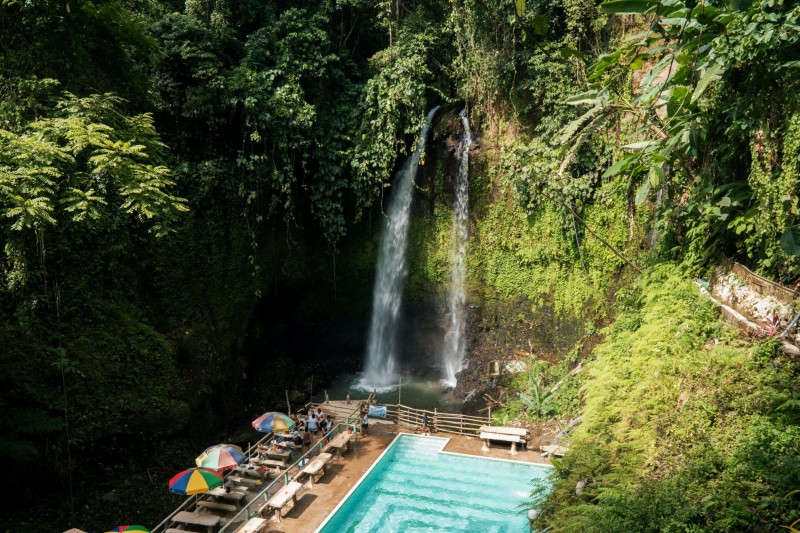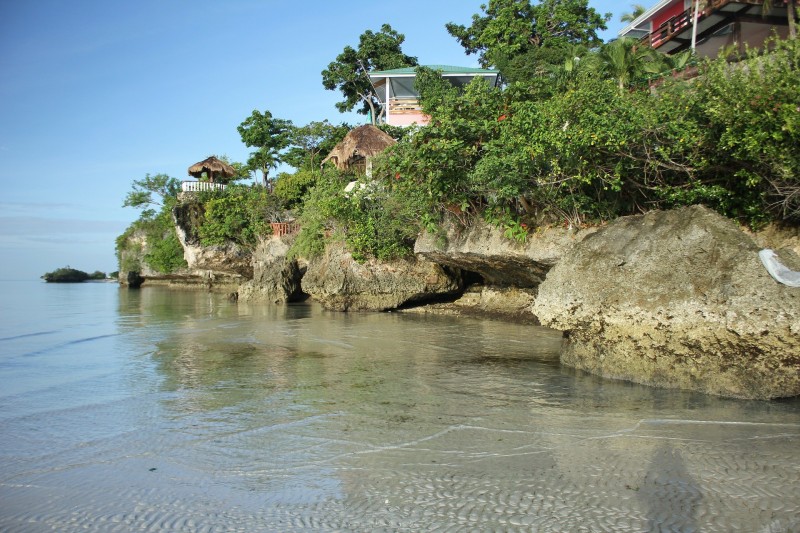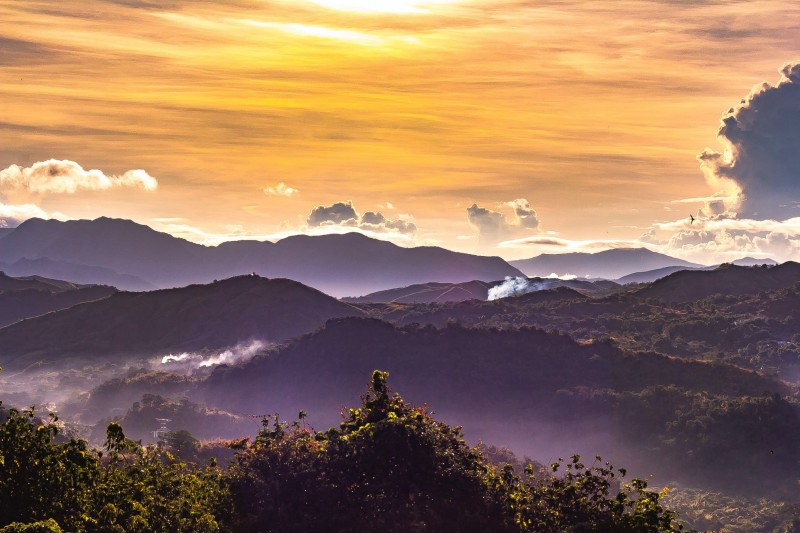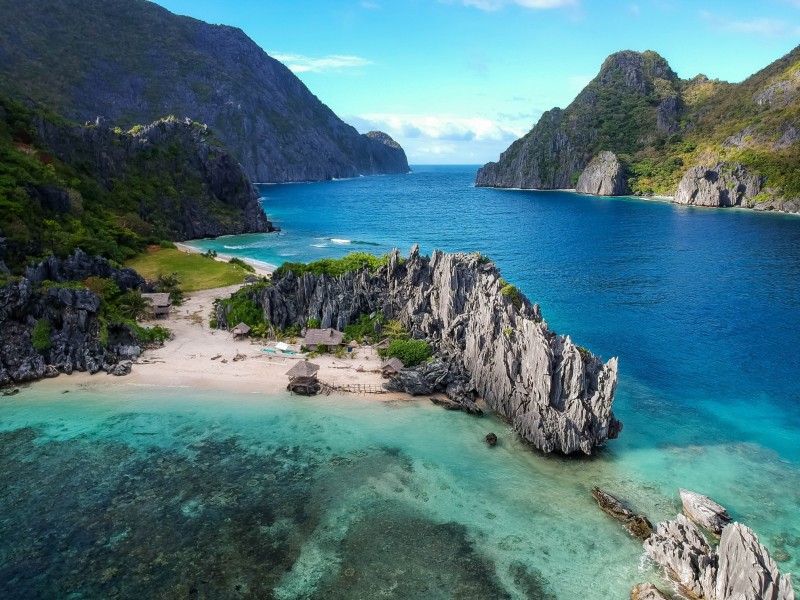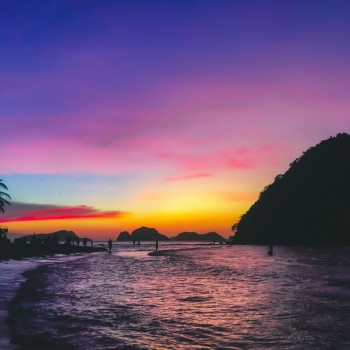Philippines
Philippines
Capital city description
Manila is the capital and central city of the Philippines. The city is the center of the country’s economic, political, social, and cultural activity. It is found on the island of Luzon and spreads along the eastern shore of Manila Bay at the mouth of the Pasig River. Formerly known as Maynilad, the name derived from the nilad plant, a flowering shrub adapted to marshy conditions, which once grew much along the river banks; the name was shortened first to Maynila.
The Manila City Hall is located in the well-known center of Ermita, Manila. The largest clock tower in the Philippines can be found in Manila; it was designed by Antonio Toledo during the 1930s, reaching close to 100 feet in elevation. It stands out during nighttime when the whole of the tower lights up. It has now become the icon for the city of Manila.
Climate
The climate in the Philippines is tropical, which is perfect for various outdoor activities such as beach bumming and mountain climbing. Climate is classified depending on the elevation and location in the country. The climate is classified into five types: tropical rainforest, tropical monsoon, tropical savanna, humid subtropical, and oceanic, characterized by relatively high temperature, oppressive humidity, and plenty of rainfall.
- Spring: March to May
- Summer: June to August
- Autumn: September to November
- Winter: December to February
Languages spoken
The two official languages of the Philippines are Filipino and English. Filipino is the national language; English was brought over to the island nation when the British invaded the region. English is primarily used in printed publications, such as newspapers and magazines. The English language is also taught in schools.
Fun/Fascinating Facts
- Around 11% of the population of the Philippines – more than 11 million people – work overseas. The Philippines is the top supplier of nurses globally, with about 25% of all overseas nurses coming from the country.
- The entire landmass of the Philippines is made up of islands, making it the second-largest archipelago in the world.
- The world’s most giant pair of shoes was made in Marikina City, Philippines, in 2002. The wingtips measured about 17.4 feet (5.3 m) in length, 7.9 feet (2.4 m) in width, and almost 6.6 feet (2 m) in height. Their cost was 2 million Philippine pesos.
- The Philippines was a Spanish colony for 377 years. It was on the island of Cebu in 1565 that the first Spaniards settled. Ferdinand Magellan, a Portuguese explorer, arrived in the Philippines in 1521, claiming the country for Spain, but settlers didn’t lay down roots until later. Magellan was later killed in battle by Lapu-Lapu and his men.
- Filipinos are crazy about basketball! Their professional league, The Philippines Basketball Association (PBS), is the second oldest after only the NBA! You’ll see makeshift hoops erected on every street corner, young men commonly wearing NBA jerseys, and local teams playing in every community hall.
Unique Customs/Traditions
- Mano is a Spanish word for "hand," while Po is used at the end of the sentence when addressing elders or superiors. In the Philippines, when children or young people greet or say goodbye to their elders, they typically do so by taking the elder's right hand with their right hand and touching the back of the elder's hand lightly on their forehead. It is a way of giving respect to the elders, and I believe that is also a way of receiving the blessing to the elders.
- Bayanihan is the spirit of public unity or effort to achieve a particular objective. A famous example of this is the neighbors carrying a hut or house to a new location. People nowadays use it to describe an outpouring of community spirit-as people give their all to the common good without expecting recognition or personal gain.
- The attitude of Filipino people towards foreigners and other people is said to be extraordinary. In Filipino culture, helping other people the best of what they have gives them an honor and a promise of true friendship. A typical Filipino house is not completely called a home without any facility ready for guests. It is filled with new and nice-looking items reserved only for them while ordinary ones are for everyday use.
- Marriage is sacred in the Philippines. It is a union of man and woman after a period of courtship and engagement. For many Filipinos, the lasting quality of dedication to God pervades a genuinely sacred marriage. The service is long and includes extensive processional sacraments, communion, along with coin and candle ceremonies. Family is heavily involved in the ceremony just as they will be as husband and wife in the couple's future. The wedding is followed by a reception where guests enjoy a feast of traditional foods.
- Death is accompanied by many rituals. These practices are a blend of faith and folk traditions and may differ between regions. Family and friends will gather and keep vigil during the wake. Wake commonly lasts from three to five days.
Popular universities
| Name | Description | |
|---|---|---|
| University of the Philippines Diliman | The University of the Philippines Diliman is a non-profit public higher education institution located in the rural setting of Quezon City. UP Diliman is currently ranked within the top 500 of the 2020 World University Rankings. The school employs more than 1,500 faculty and enrolls almost 24,000 students. It also features the most Center of Excellence departments in the country, proof of its wide range of high-caliber courses and programs. | |
| Ateneo de Manila University | Ateneo de Manila University is a non-profit private higher education institution located in Katipunan, QC. Ateneo de Manila University offers elementary, junior, and senior high school and college education. It was founded in 1859 by Jesuits and is the third oldest university in the Philippines. It’s recognized as one of the top schools for undergraduate and graduate programs in arts, sciences, education, management, law, and government. | |
| De La Salle University | De La Salle University (DLSU) is a non-profit private higher education- Catholic research university was founded by De La Salle Brothers in 1911 and was originally located in Paco, Manila. It is the first of only two institutions awarded a Level IV accreditation by the Philippine Accrediting Association of Schools, Colleges, & Universities (PAASCU). It ranked 155th place at the 2019 Quacquarelli Symonds Asian University Rankings. De La Salle University (DLSU) offers courses and programs leading to officially recognized higher education degrees such as pre-bachelor degrees (i.e., certificates, diplomas, associate or foundation), bachelor degrees, master degrees, doctorate degrees in several areas of study. | |
| University of Santo Tomas | The University of Santo Tomas is a non-profit private higher education institution located in the city of Manila. UST holds the recognition of being the oldest existing university in Asia. It's also the largest Catholic university globally in terms of the student population on one campus. It was founded in 1611 by Archbishop Miguel de Benavides. University of Santo Tomas (UST) offers courses and programs leading to officially recognized higher education degrees such as bachelor's degrees, master's degrees, doctorate degrees in several areas of study. | |
| University of San Carlos | The University of San Carlos (USC) is a private Catholic research university founded by Jesuit missionaries in 1935. It's one of the most prominent universities in Cebu City, covering a total land area of 90 hectares combined from its five campuses. It consistently ranks among the top schools in the country and Asia and is recognized by CHED for having the most Center of Excellence and Center of Development in the Vis-Min area. University of San Carlos (USC) offers courses and programs leading to officially recognized higher education degrees such as bachelor's degrees in several areas of study. | |
| Suliman University | Suliman University was established in 1901 as Silliman Institute. This private research university located in Dumaguete was founded by the Presbyterian Board of Foreign Missions and named after the school's first donor, Dr. Horace Brinsmade Silliman. It is recognized as the first American school in the Philippines and the entire Asian continent. Silliman University (SU) offers courses and programs leading to officially recognized higher education degrees such as bachelor's degrees, master's degrees, doctorate degrees in several areas of study. It's one of only five universities in the Philippines with "Institutional Accreditation" by the Federation of Accrediting Agencies (FAAP). | |
| Mapua University | Mapua University, formerly known as Mapua Institute of Technology, is a non-sectarian research school with campuses in Manila and Makati. It was founded in 1925 and named after its founder, Tomas Mapua, the first registered Filipino architect This university is known for its Engineering programs, with currently 7 Engineering courses and I.T recognized by CHED as Centers of Excellence. It’s also the first Philippine and Southeast Asian educational institution to have ABET (Accreditation Board for Engineering and Technology Inc.) certification. | |
| Mindanao State University | Mindanao State University is a public, non-sectarian, coeducational institution of higher education and research located in Iligan City. MSU-IIT was established in 1968 and integrated as the first autonomous unit of the MSU System. It has multiple Center of Excellence recognitions from CHED and has several programs that received Accredited-Status from the Accrediting Agency of Chartered Colleges & Universities of the Philippines (AACCUP). | |
| Xavier Unversity | Xavier Unversity is a private, Catholic university run by the Society of Jesus in Cagayan De Oro, Northern Mindanao, Philippines. It was established in 1933 as Ateneo de Cagayan. It became the first institution in Mindanao to be granted university status in 1958 and named in honor of the Jesuit missionary St. Francis Xavier. Xavier University-Ateneo de Cagayan (XU) offers courses and programs leading to officially recognized higher education degrees such as bachelor's degrees, master's degrees, doctorate degrees in several areas of study. | |
| Saint Louis University | Saint Louis University was initially named St. Louis School; Rev. Fr. Seraphin Devesse founded it in 1911 to provide education for ten local boys. Saint Louis University, Baguio City (SLU) offers courses and programs leading to officially recognized higher education degrees such as bachelor's degrees in several areas of study. St. Louis University comprises four campuses covering a total land area of 24 hectares, housing more than 40,000 students. In 1963, it was granted university status under Diosdado Macapagal's government, becoming the first university north of Manila. It received several Centers of Excellence ratings from CHED and accreditation from PAASCU. | |
Festivals & Events
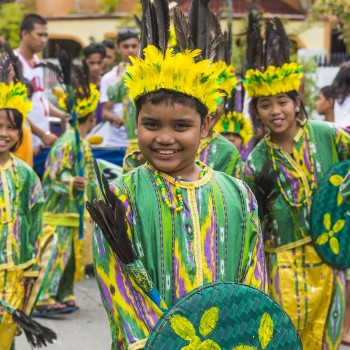
Sinulog Festival
Date: third and fourth Sunday of January
Sinulog Festival is one of the famous festivals in the Philippines held on the third Sunday of January in Cebu City and on the fourth Sunday of January in Carmen, Cebu. It is a week-long event with processions, parties, concerts, colorful and lively street dancing, irresistible drum beats, and parades. Apart from being a religious festival, Sinulog has also served as a venue to showcase the unique Cebuano artistry and creativity as participants offer stunning performances and a remarkable celebration that continues to capture the hearts of local and foreign tourists.
For years, millions of devotees of the miraculous image of the Child Jesus, Santo Niño, have been coming to Cebu City from all over the world to show their honor to the Holy Child in the week-long Sinulog festival.
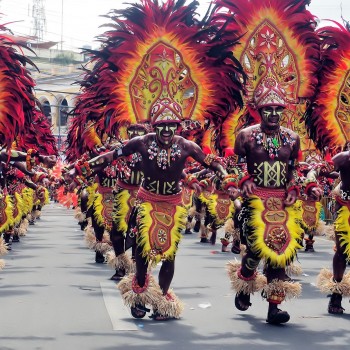
Dinagyang
Date: 4th Sunday of January
Dinagyang is one of the most celebrated festivals in the Philippines because of its fun, exciting, and picturesque celebration. It is another religious festival in the Philippines that observes the feast of the Santo Niño and the compact between the Datus and locals.
On the 4th Sunday of January, the festival transforms Iloilo City into a massive street party with overflowing drinks and food. The most thrilling part of the festival is that the city hosts a highly competitive street dancing contest that features tribes represented by the locals.
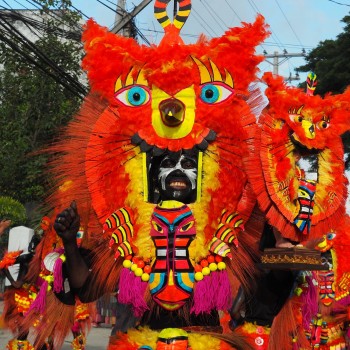
Ati-Atihan Festival
Date: January
Ati-Atihan Festival in Aklan is considered one of the Philippines' best festivals. This religious festivity is also one of the oldest Philippine festivities honoring Santo Niño. Presenting locals masquerading as Negritos in colorful costumes, dancing, and chanting "Hala Bira!" in Aklan for their Ati-Atihan Festival is the main highlight of the celebrations, along with the fantastic parade of tribes and floats and religious procession.

Panagbenga
Date: February to March
Panagbenga is a local Kankana-ey term in Cordillera, which means “a season for blossoming.” Panagbenga Festival is a month-long flower festival in Baguio.
Panagbenga is a famous festival in the Philippines. Cordillerans exhibited their creativity by building giant flower floats. These will be paraded on the streets of Baguio during the Grand Float Parade. Along with this is a lively, colorful, and cultural street dance performed by the locals, mostly students. Tourists flock to the city to witness the Grand Float Parade, which features giant floats in different characters made of flowers. Numerous celebrities from all over the country also perform here.

Lechon Festival
Date: 24th June
Lechon Festival is held every 24th of June in honor of St. John the Baptist. The local government and residents prepare many thrilling activities for everyone to experience—street dancing, Lechon parade, and water dousing.
The main highlight of this festival is the unique lechons parade clothed in amusing fun characters while the town participates in a water splashing tradition.
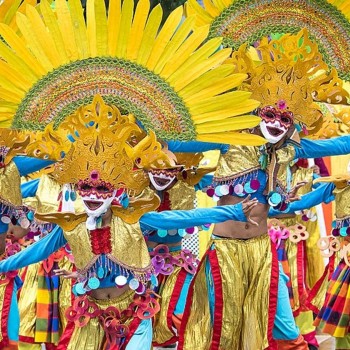
MassKara Festival
Date: MassKara Festival
MassKara Festival is a very famous festival in the Philippines. MassKara is from the word “mass,” meaning “many,” and “kara” meaning “faces,” hence, calling it the Festival of Many Faces. Many tourists flock to Bacolod to witness this grand Filipino cultural festival in October.
Known as the City of Smiles, Bacolod parades beautiful and colorful smiling masks worn by the locals during this festival in the Philippines. The main event and highlight of the festival is the MassKara Festival dance competition, where participants wear colorful costumes and vibrant, smiling masks while dancing to the rhythm of Latin music.
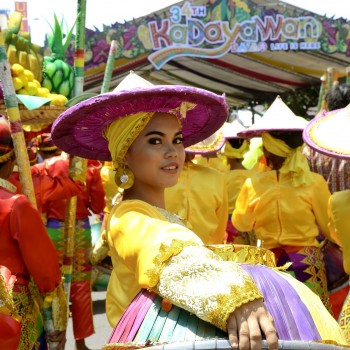
Kadayawan Festival
Date: 3rd week of August
Every 3rd week of August celebrates the annual Kadayawan festival as a thanksgiving event for the gifts of nature, the wealth of culture, and bounties of harvest and serenity of living. It also celebrates and gives tribute to the lumads, a common group of indigenous people living in the city.
Kadayawan is a native expression in the Dabawnon tongue. It originates from the word “madayaw,” which means good, valuable, and superior.
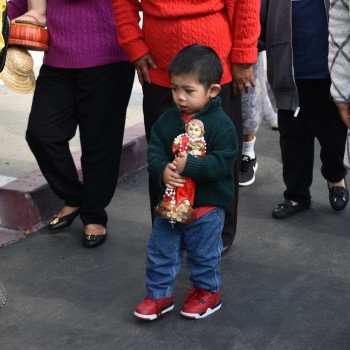
Pahiyas Festival
Date: 15th May
Pahiyas Festival is one of the Philippines' most colorful and vibrant festivals held in Quezon Province. It is an annual celebration to honor San Isidro Labrador, the patron saint of farmers; It is the farmers' thanksgiving for a bountiful harvest. Houses are decorated with the town's best agricultural products, primarily colorful Kipings— a traditional Filipino leaf-shaped wafer made from glutinous rice.
The festival's highlight is a procession of the image of San Isidro Labrador. The parade features a pair of giant papier-mâché figures of a farmer and his wife. The more exciting about the Pahiyas festival is that visitors can grab all fresh fruits and vegetables everywhere to taste and enjoy for free.
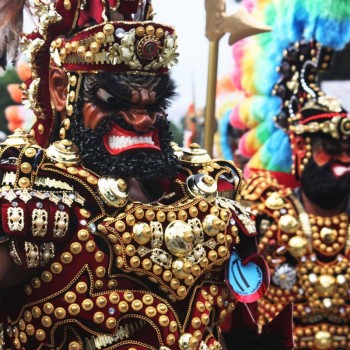
Moriones Festival
Date: Holy week ( March or April)
Moriones is a religious festival held every Holy Week in the island province of Marinduque in the Philippines. Moriones is the commemoration of the life of St. Longinus, whose eye was healed by the blood of Christ. It is a festival that lasts for a week in Marinduque.
Morion refers to the helmet of the people dressed as Roman soldiers, while Moriones refers to those who dress as these Roman soldiers. These costumed Moriones roam the streets for seven days, scaring children and making noise to reenact the search for Longinus, the centurion who pierced Jesus on the cross with a spear.
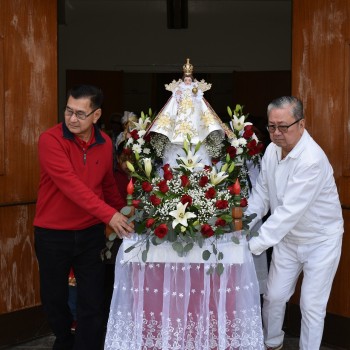
Flores de Mayo Festival
Date: 1st - 30th May
Flores de Mayo is a unique month-long festival held in the entire country in May. People organize parades through the streets and march dressed as Biblical figures. As part of rituals, people chant the rosary and offer flowers and prayers to an image of Mary every night. After the procession and ceremonies, people share food and snacks.
Attractions / Top Sights
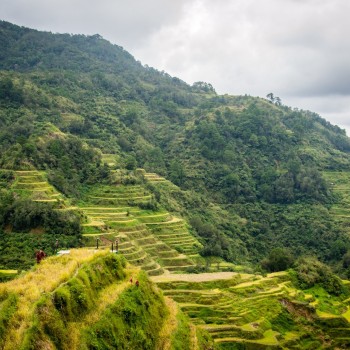
Banaue Rice Terraces
When to visit: June-July
When to visit: https://whc.unesco.org/en/list/722
The stunning Banaue Rice Terraces, locally known as the Hagdan-Hagdang Palayan, are the Filipinos' pride worldwide, located at the Cordillera mountain ranges in the northern island of Luzon. Formed from the mountain ranges about 2,000 years ago without modern tools by the Ifugao tribes, these magnificent farm terraces resemble giant steps reaching the sky. Locals still plant rice and vegetables on the terraces. Due to its uniqueness and glory, it was listed on the UNESCO World Heritage List in 1995.
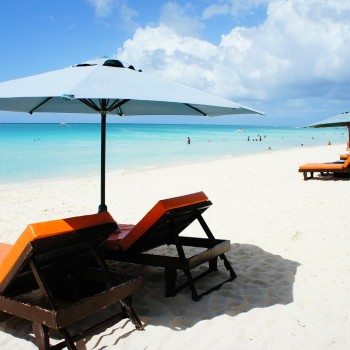
Boracay
When to visit: March - May
Boracay is a famous island with award-winning beaches and beautiful resorts such as Tambisaan Beach, Crocodile Beach, and Puka Beach. It offers excellent adventures like cliff diving, parasailing, motorbiking, horse riding, snorkeling, kite surfing, and scuba diving. When the sun sets, Boracay's nightlife pulsates with many bars and restaurants serving food, drinks, and fun until dawn.
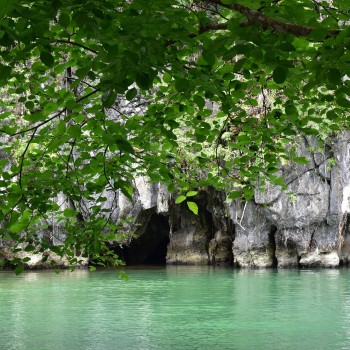
Puerto Princesa Underground River
When to visit: March-May
When to visit: https://whc.unesco.org/en/list/652
Puerto Princesa Subterranean River is one of the longest underground rivers in the world that outflows directly to the sea, traveling five miles through an underground cave system—located on the northern coast of the island of Palawan, Puerto Princesa.Home to unspoiled landscapes rich in wildlife, an underground river.
Puerto Princesa Underground River is undoubtedly the best tourist attraction in the Philippines to see the wonder of nature. Hence, it was inscribed on the UNESCO World Heritage List in 1999. Inside the Puerto Princesa Underground River, you will see karsts—natural rock formations created by dissolving limestone—loom in every direction.
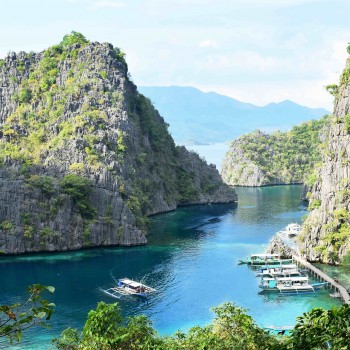
Kayangan Lake
When to visit: Between December and May
Kayangan Lake is one of the central Coron tourist spots. It is one of the purest lakes in the Philippines and Asia. The water is pristine, so it’s perfect for swimming. Tall limestone formations border Kayangan Lake, and if you want a view of the entire place, you can climb up a 300-step hill for a picture-perfect view. The most popular activity at Kayangan Lake is snorkeling and freediving.
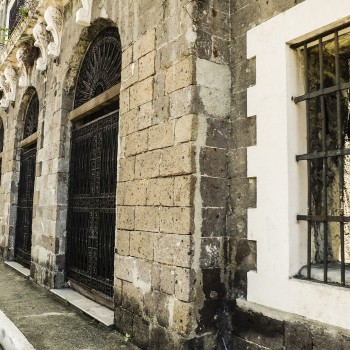
Intramuros
When to visit: November - April
Intramuros, most popularly known as the “Walled City,” is a place rich in history and culture is one of the oldest districts of Manila, built on the south bank of the Pasig River around 1571. The Spaniards built it as their political and military base in Asia.
Its cobblestone streets and preserved architecture date hundreds of years ago. It is bound on all sides by moats and thick, high walls, some over 6 meters high. It’s a popular place to visit in Manila and one of the most historical places in the Philippines because of the many remarkable events.
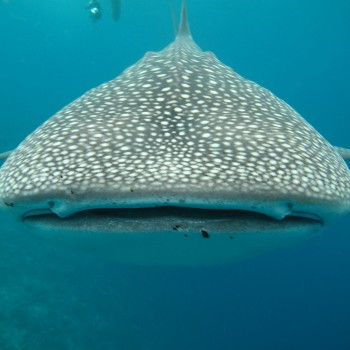
Donsol
When to visit: November - April
Donsol is a small village situated in the province of Sorsogon, home to pristine beaches, stunning waterfalls, and unexplored caves. The fishing village of Donsol is the place in the Philippines to see whale sharks that can be seen between November and June. Tourists can also take a boat cruise along the Donsol River through mangrove and palm trees and watch the night light up with millions of sparkling fireflies.
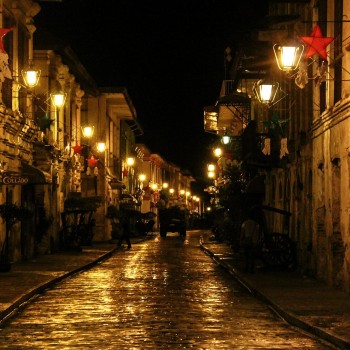
Vigan
When to visit: November - April
When to visit: https://www.vigan.ph/attractions/calle-crisologo-mena-crisologo-street.html
Vigan is one of the best historical tourist attractions in the Philippines. Visiting Vigan is like traveling back in time because of its preserved Spanish Colonial town that even the world considers one of the best.
Calle Crisologo is a street of old Spanish structures, mostly houses of wealthy families and Filipino-Chinese traders. It is where you’ll see the famous cobblestone streets that represent Vigan’s image. A walk through the street is magical at night. The quietness and shadows that come with the night add more to the 18th-century ambiance of the lamp-lit street that local and foreign visitors love. Visitors can take advantage of this romantic atmosphere by having dinner in one of the old houses that have been converted to a restaurant, like Café Leona, before or after their walk.
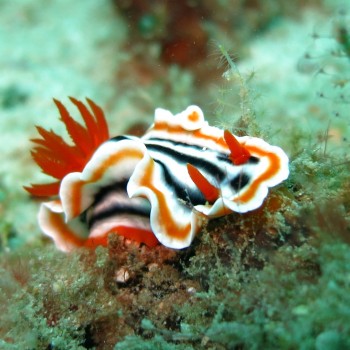
Puerto Galera
When to visit: November - April
When to visit: https://en.unesco.org/biosphere/aspac/puerto-galera
Puerto Galera Biosphere Reserve is situated on Mindoro Island, about 120 km south of Manila. Puerto Galera is well known for its numerous scuba diving spots; the area was designated a Man and Biosphere Reserve of UNESCO in 1973 and had some of the most diverse coral reef diving in Asia located at the heart of the ‘Coral Triangle.’ The “center of the center” of marine biodiversity globally is Verde Passage – the waters between Batangas and Mindoro.
Its coral reefs house about 60 percent of the world’s shore fish. The most popular beaches are White Beach and Sabang Beach, which offer nearby shopping, dining, nightlife, and hotel accommodation.
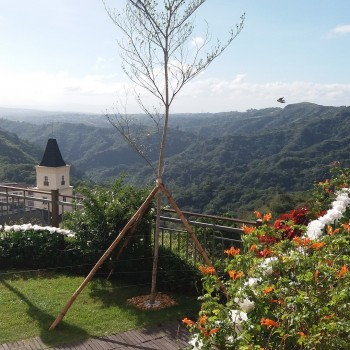
Tagaytay
When to visit: January - April
Tagaytay is one of the country's most popular domestic tourism destinations due to its scenery and chilling climate. Tagaytay overlooks Taal Lake in Batangas and gives views of Taal Volcano Island in the middle of the lake through different vantage points located in the city.
Tagaytay is relatively close to the capital city of Manila, only 59 kilometers (37 miles) away via Aguinaldo Highway. Tourists endure outdoor activities, including visits to the famous Picnic Grove, which offers family activities such as horseback riding and zip-line adventures. Tourists can also tour the Taal Volcano and Crater Lake, where they ride on boats to the island and horsebacks to the top of the crater. A trip to the town is not complete without visiting the sky ranch, a five-hectare area with a Ferris wheel, a super Viking ride, and lots of other rides for youngsters.
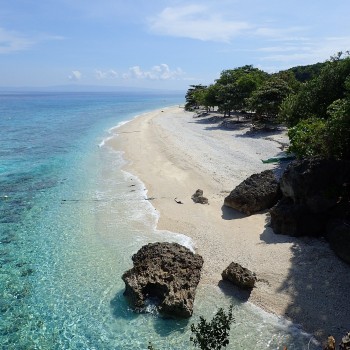
Cebu
When to visit: December - March
Cebu is a province of the Philippines located in the Central Visayas region and consists of the main island and 167 surrounding islands and islets. Being one of the most developed provinces in the Philippines, it has transformed into a global hub for business processing services, tourism, shipping, and furniture-making in a decade.
Cebu City is the oldest city in the Philippines, the second largest after Manila, and the capital of the Cebu province. It has rich in history and offers a wealth of cultural diversity. One of the important landmarks is the Basilica del Sto. Nino, a Catholic Church built by the Spanish in the 16th century. Close to the church is the chapel that houses the Magellan's Cross - a cross planted by Ferdinand Magellan to propagate the arrival of Christianity to the Philippines.















